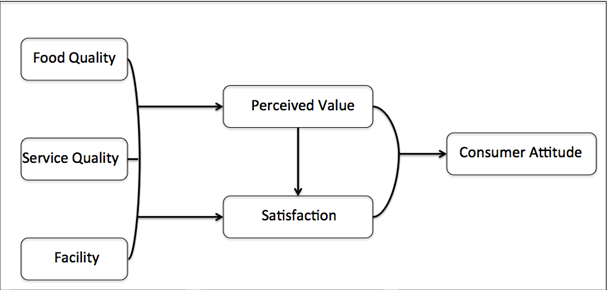Introduction
Much consideration has been given to some of the core structures of understanding the buyer behavior, the so-called “perceived value” and rewarding experience, which are described in detail in service marketing materials and special literature.
However, the future research of their mutual relation is still in demand, although the undeniable importance of these structures has already become a source of many theoretical discussions and brought forth some empirical evidence. A comprehensive approach based on a number of landmark research studies allowed to incorporate perceived value, quality and rewarding experience or satisfaction within a single research framework.
Such food qualities as taste, flavor, temperature and texture being the main product of foodservice industry, have been given the most attention and their aspects have been considered the key structures for understanding the buyer behavior and were widely explored in service and marketing literature.
Tangible and intangible aspects of this industry alike were identified as the main attributes that allow comprehending the perceived value, customers’ behavioral intentions and their levels of satisfaction. The definition of attitude most often includes the general evaluation of a brand or a solo product, while perceived quality usually implies the buyer’s judgment about organization’s overall superiority or advantage; both of these concepts have made significant contributions in marketing and consumer research fields.
The reason for significant attention that was aimed at foodservice research was the rise of interest in and concern about service-quality literature, which also led to identifying the quality of service as one of the keystones of the dining experience, and to further understanding of the perceived value, customers’ behavioral intentions and their levels of satisfaction.
The goal of this study is to explore the key features of Tamimi foodservice and their impact on perceived value and satisfaction, as well as the consumer attitude of the SECStaffs.
Conceptual background
The guidelines for this research framework are presented in Fig. 1.
Figure 1: Concept of Research Framework

As can be seen in Figure 1 above, the satisfaction serves as an intermediary agent between the perceived value and buyer’s attitude while the same framework also encompasses and investigates the impact of differences in locations, the management and Staffbase position differences on the process of attitude formation.
This research framework enriches the previous studies on interrelations of perceived value, satisfaction, and quality attributes. Moreover, its adaptation allowed the framework to fit the specific environment in the shopping and entertainment centers. As was mentioned above, this study aims to emphasize the key features of Tamimi foodservice and their impact on perceived value and satisfaction, and eventually the consumer attitude.
To sum it up, the study suggests that the formation process of consumer attitudes towards Tamimi foodservice is subject to change, depending on the groups and is, in fact, a function of Tamimi foodservice features, including food quality, quality of service, menu, and facilities), perceived value, and satisfaction.